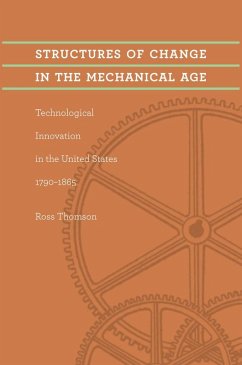The United States registered phenomenal economic growth between the establishment of the new republic and the end of the Civil War. Ross Thomson's fresh study accounts for the unprecedented technological innovations that helped propel antebellum growth.Thomson argues that the transition of the United States from an agrarian economy in 1790 to an industrial leader in 1865 relied fundamentally on the spread of technological knowledge within and across industries. Essential to this spread was a dense web of knowledge-diffusing institutions-new occupations and industries, the patent office, machine shops, mechanics' associations, scientific societies, public colleges, and the civil engineering profession. Together they composed an integrated innovation system that generated, disseminated, and employed new technical knowledge across ever-widening ranges of the economy.To trace technological change in fourteen major industries and the economy as a whole, Thomson analyzes 14,000 patents, the records of two dozen machinery firms, census data for 1,800 companies, and hundreds of business directories. This exhaustive research leads to his interesting interpretation of technological diffusion and development. Thomson's impressive study of the infrastructure that fueled and supported the young country's economic and industrial successes will interest students of economic, technological, and business history.
Dieser Download kann aus rechtlichen Gründen nur mit Rechnungsadresse in A, B, BG, CY, CZ, D, DK, EW, E, FIN, F, GR, HR, H, IRL, I, LT, L, LR, M, NL, PL, P, R, S, SLO, SK ausgeliefert werden.

